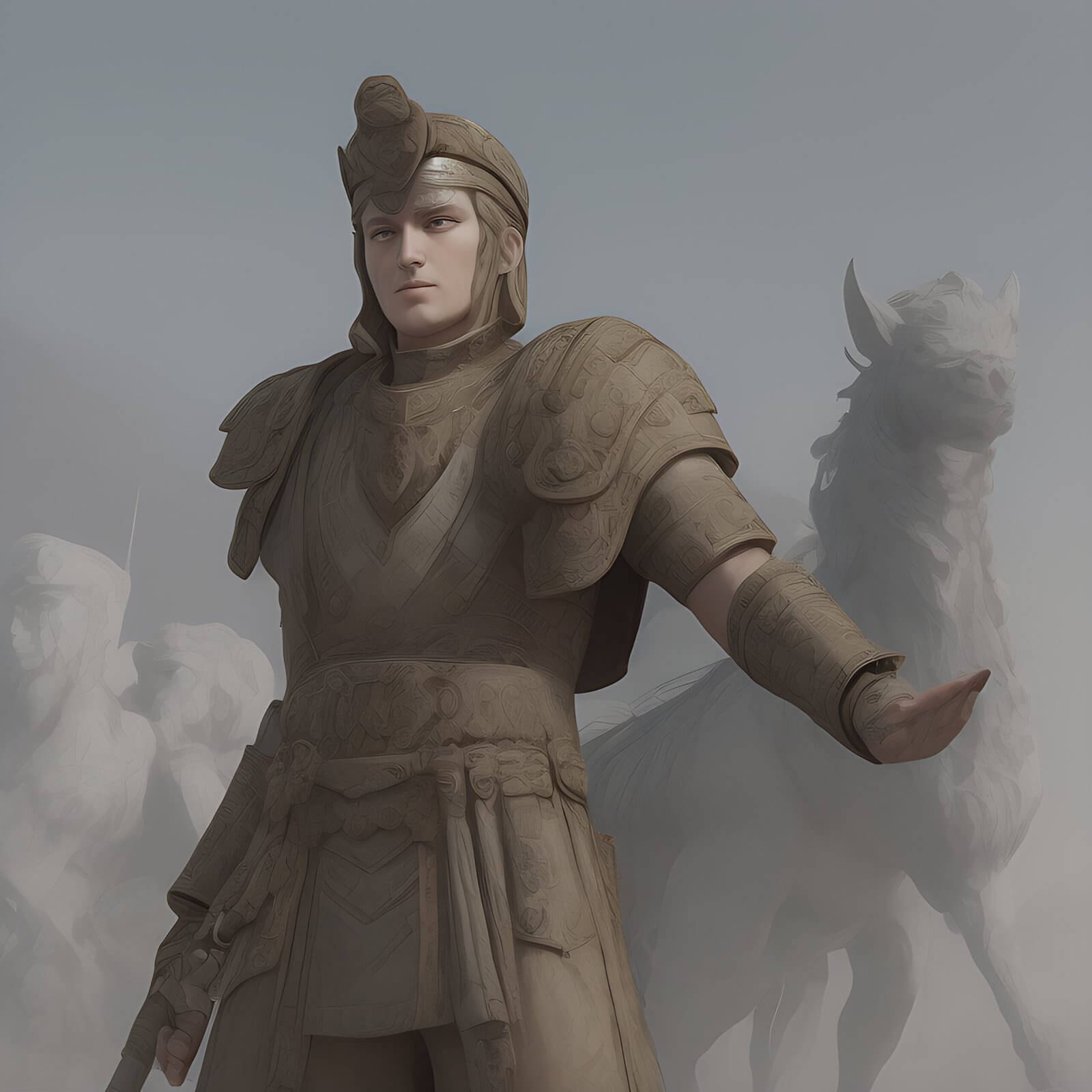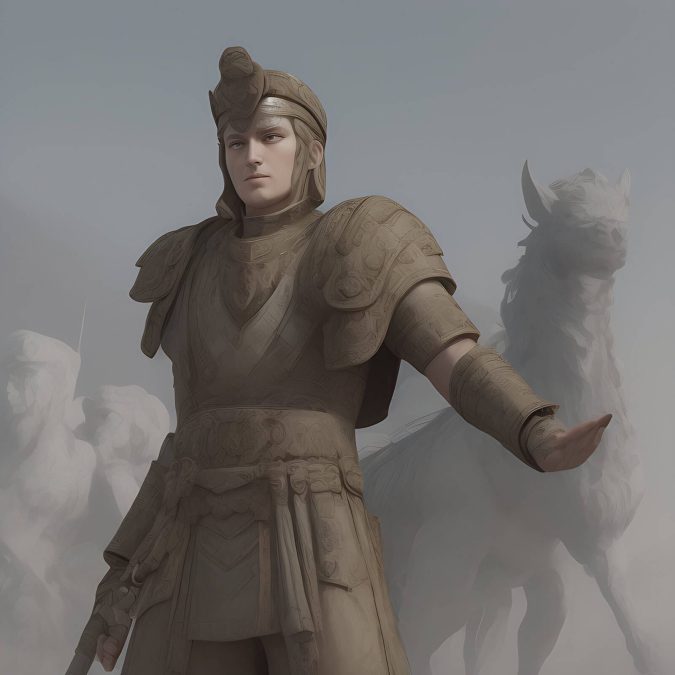
1. Introduction
The Seleucid Empire, a vast Hellenistic kingdom that emerged after the death of Alexander the Great, stands as a pivotal chapter in ancient history. Spanning from 312 BC to 63 BC, the Seleucid Empire played a crucial role in shaping the political landscape of the ancient Near East. This comprehensive study aims to delve into the origins, expansion, challenges, and legacy of the Seleucid Empire, shedding light on its significance in understanding the dynamics of ancient empires and the interplay of cultures.
Overview of the Seleucid Empire
The Seleucid Empire was founded by Seleucus I Nicator, one of Alexander’s generals, who inherited a portion of the vast empire after Alexander’s death. Stretching from present-day Turkey to the borders of India, the Seleucid Empire encompassed diverse regions and populations, blending Greek and local traditions.
Importance of Studying the Seleucid Empire
Studying the Seleucid Empire offers insights into the interactions between Greek and Eastern cultures, the complexities of imperial administration, and the challenges of ruling a diverse empire. The empire’s legacy reverberates through subsequent civilizations, influencing art, architecture, and political structures in the ancient world.
Objectives of the Study
This study aims to provide a comprehensive analysis of the Seleucid Empire, exploring its historical background, expansion and consolidation, society and culture, challenges and decline, and enduring legacy. By examining key aspects of the Seleucid Empire, we seek to understand its impact on ancient history and draw lessons from its rise and fall.
2. Historical Background
Origins of the Seleucid Empire
The Seleucid Empire traces its origins to the division of Alexander the Great’s empire among his generals, known as the Diadochi. Seleucus I Nicator, a trusted general and administrator, secured control over the eastern provinces, laying the foundation for the Seleucid dynasty.
Alexander the Great’s Conquests and Division of His Empire
Alexander’s conquests extended from Greece to Egypt, Persia, and beyond, creating one of the largest empires in history. After his untimely death, his empire was divided among his generals, with Seleucus taking control of the eastern territories.
Seleucus I Nicator and the Establishment of the Seleucid Empire
Seleucus I Nicator consolidated his power in the aftermath of Alexander’s death, establishing the Seleucid Empire with its capital at Seleucia on the Tigris. His reign marked the beginning of a new era in the Near East, blending Greek and Persian influences in governance and culture.
3. Expansion and Consolidation
Military Campaigns and Conquests
The Seleucid Empire expanded through a series of military campaigns, extending its borders into Asia Minor, Syria, Mesopotamia, and parts of Central Asia. Seleucid rulers, such as Antiochus III the Great, undertook ambitious military campaigns to consolidate their control over the empire.
Administration and Governance
The Seleucid Empire implemented a bureaucratic system of administration, with satraps governing provinces and local officials managing day-to-day affairs. The empire’s diverse population necessitated policies that accommodated various cultures and religions, fostering a sense of unity amidst diversity.
Cultural and Religious Policies
The Seleucid Empire promoted cultural exchange and religious tolerance, blending Greek, Persian, and local traditions. The spread of Hellenistic culture, the patronage of Greek cities, and the syncretism of religious beliefs shaped the cultural landscape of the empire.
4. Society and Culture
Social Structure
The society of the Seleucid Empire was hierarchically structured, with the ruling elite, aristocracy, and commoners occupying distinct social strata. Urban centers, such as Antioch and Seleucia, thrived as hubs of commerce and culture, attracting a diverse population.
Religion and Religious Practices
Religion played a significant role in Seleucid society, with a blend of Greek, Persian, and local cults coexisting. The worship of Greek deities, Zoroastrianism, and indigenous religious practices reflected the diverse religious landscape of the empire.
Art, Architecture, and Literature
The Seleucid Empire witnessed a flourishing of art, architecture, and literature, influenced by Greek and Eastern styles. Monuments, such as the Temple of Bel in Palmyra and the Mausoleum of Mausolus at Halicarnassus, showcased the artistic achievements of the period.
5. Challenges and Decline
Internal Conflicts and Succession Struggles
Internal power struggles and succession disputes plagued the Seleucids Empire, weakening central authority and leading to fragmentation. Rivalry among claimants to the throne and the interference of external powers destabilized the empire.
Revolts and Rebellions
Local revolts and rebellions erupted in various provinces of the Seleucids Empire, challenging imperial control and draining resources. Revolts by native populations, such as the Jews in Judea, posed significant challenges to Seleucid rule.
External Pressures from Neighboring Powers
The Empire faced external pressures from neighboring powers, including the Ptolemies in Egypt, the Parthians in the east, and the Romans in the west. Military conflicts and diplomatic maneuvering strained the empire’s resources and weakened its ability to maintain territorial integrity.
6. Legacy of the Seleucid Empire
Influence on Subsequent Empires and Cultures
The Empire’s legacy influenced subsequent empires, such as the Parthians and the Romans, shaping the political and cultural landscape of the ancient world. Hellenistic culture, administrative practices, and artistic achievements of the Seleucids left a lasting impact on the regions they governed.
Archaeological and Historical Significance
Archaeological discoveries in former Seleucid territories, such as the ancient city of Antioch, provide valuable insights into the material culture and urban life of the period. Historical accounts by ancient historians, including Polybius and Joseph Us, offer detailed narratives of Seleucid history and society, enriching our understanding of this dynamic empire.
Lessons Learned from the Rise and Fall of the Seleucids
The rise and fall of the Empire offer valuable lessons in imperial governance, cultural exchange, and the challenges of managing a diverse empire. The Seleucids navigated complex geopolitical landscapes, balanced competing interests, and adapted to changing circumstances, leaving a legacy of resilience and innovation.
7. Conclusion
The Empire, with its rich history and cultural heritage, stands as a testament to the complexities of ancient empires and the interplay of diverse cultures. By exploring the origins, expansion, challenges, and legacy of the Empire, we gain valuable insights into the forces that shaped the ancient Near East and influenced subsequent civilizations. The study of the Empire underscores the significance of cross-cultural interactions, administrative innovations, and the enduring impact of historical legacies.
Summary of Key Findings
Through a comprehensive examination of the Seleucid Empire, we have uncovered the multifaceted aspects of Seleucid history, society, and culture. From its origins under Seleucus I Nicator to its decline and fragmentation, the Seleucid Empire navigated a complex web of internal and external challenges, leaving behind a rich tapestry of achievements and struggles.
Significance of Studying the Seleucid Empire
Studying the Seleucid Empire offers a window into the complexities of ancient empires, the dynamics of cultural exchange, and the lessons learned from imperial governance. The Seleucids’ legacy reverberates through the annals of history, influencing subsequent empires and shaping the cultural landscape of the ancient world.
Suggestions for Further Research
Further research on the Seleucid Empire could explore specific aspects of Seleucid society, such as gender roles, economic structures, and urban development. Comparative studies with other Hellenistic kingdoms and empires could provide insights into the broader context of ancient imperial dynamics. Archaeological excavations in Seleucid sites and reexaminations of historical sources offer avenues for expanding our knowledge of the Seleucid Empire.
8. References
– Bosworth, A. B. (2002). The Legacy of Alexander: Politics, Warfare, and Propaganda under the Successors. Oxford University Press.
– Grainger, J. D. (1990). The Seleukid Empire of Antiochus III (223-187 BC). Routledge.
– Sherwin-White, S., & Kuhrt, A. (1993). From Samarkhand to Sardis: A New Approach to the Seleucid Empire. University of California Press.
